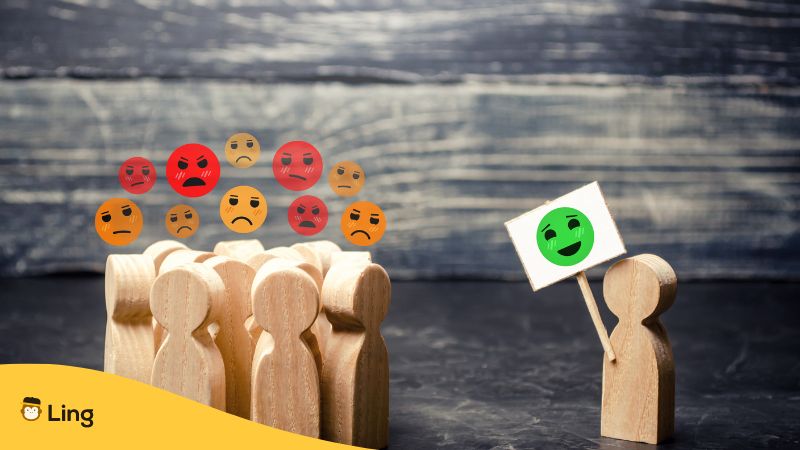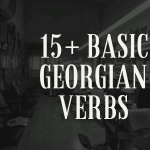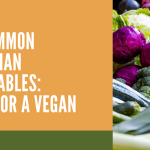The Urdu language, mainly famous for its rich literature, is also deeply rooted in cultural values and respect. What primarily reflects this aspect is the Urdu honorific forms or honorific stems. They serve as the linguistic tool to convey politeness, reverence, and humility during social interactions. Besides, there are also a few acts that are counted as honorific because they denote respect towards other people. Let’s, take a look at some Urdu honorifics and actions to ensure respect and reverence as we interact.
Table Of Contents
Understanding Urdu Honorifics
Urdu honorifics are words, phrases, or titles that are used to denote respect or esteem when addressing someone. These are generally honorific titles that reflect the social status, profession, gender, and informal or formal relationship. Therefore, there are many Urdu honorifics that vary accordingly.
List Of Traditional Urdu Honorific Words
As mentioned above, Urdu honorifics differ according to the status of the people and formality level. Some common honorifics in the Urdu language are as follows:
Islamic Honorifics
| English | Urdu | Transliteration |
|---|---|---|
| Used for Prophet Muhammad (PBUH) only | صلی اللہ علیہ وسلم | sallalah-o-alayhi wasallam |
| Used for other prophets | علیہ السلام | allayhe salam |
| Used for Prophet Muhammad’s (PBUH) male companions | رضی اللہ تعله عنهُ | razi allah tallah anhu |
| Used for Prophet Muhammad’s (PBUH) female companions | رضی اللہ تعله عنہا | razi allah tallah anha |
| A person who is a skilled reciter of the Quran | قاری صاحب | qari sahab |
| One who gives azan | موعزن | moazz’in |
| Used to glorify Allah | سبحانه و تعالیٰ | Subhana o taallah |
| Used for religious scholars | مولانا | Maulana |
Very Familiar Friends
| English | Urdu | Transliteration |
|---|---|---|
| It is a common and informal term that means buddy. | یار | yar |
| It is used as dear or to show extreme closeness or deep affection. | جگر | jigar |
| It is a generic term for close friends. | دوست | dost |
| It means brother and is a friendly term for a male friend. | بھائی | bhai |
| It means sister and is an affectionate term for a female friend. | بہن | behen |
| Used to address an elderly male friend/ relative. It means uncle. | چاچا | chacha |
Marital Status Connotation
| English | Urdu | Transliteration |
|---|---|---|
| Formal and informal terms for the husband | بیگم | begum |
| Formal and informal term for husband | شوہر | shohar |
| It is a plural form of wife used as wives | بیگمات | begamat |
Traditional Honorifics For Humble Servant
| English | Urdu | Transliteration |
|---|---|---|
| Used to refer humility | خادم | khadim |
| Used to express subservience | غلام | ghulam |
Particular Social Statuses Or Cultural Honorifics
| English | Urdu | Transliteration |
|---|---|---|
| Used for noble people or aristocrats | نواب | nawab |
| Used for kings or royal majesty | راجہ | raja |
Traditional Honorifics For Addressing Airline Pilots
| English | Urdu | Transliteration |
|---|---|---|
| Captain | کپتان | kaptan |
| Sir | جناب | janab |
| Respected sir | معزز محترم | muazz’iz mohtaram |
Other Honorifics
| English | Urdu | Transliteration |
|---|---|---|
| It is a general term used to refer to Mr. and Mrs. | جناب | janab |
| Used for women as Madam | صاحب | sahab |
| Used for woman as Madam | صاحبہ | sahiba |
| Used for man as respected | محترم | mohtaram |
| Female honorific form of محتزم | محترمہ | mohtarma |

How Do You Say Honorific In Urdu?
‘Honorific’ in Urdu is عزت و احترام کے الفاظ (izzat o ehtiram ke alfaz). Honorific words help confer honor to someone or address them respectfully.
Other Urdu Words To Say Honorific
| English | Urdu | Transliteration |
|---|---|---|
| Honorific title | احترامی لقب | Ehtarami laqab |
| Title of honor | تکریمی لقب | Taqreemi laqab |
| Address of honor | عزت کا خطاب | Izzat ka khitab |
| Honorable address | معزز خطاب | Moazz’iz khitab |
| Dignified title | توقیری لقب | Tauqeeri laqab |
A Brief List Of Honorific Acts
In Pakistani culture, some gestures and actions are considered honorific as they show respect and honor. Such Urdu honorific stems reflect both the linguistic and cultural values of the natives. Some of them are as follows:
| English | Urdu | Transliteration |
|---|---|---|
| Say greetings | سلام کرنا | Salam karna |
| Warm handshake | ہاتھ ملانا | Hath milana |
| Hug | گلے ملنا | Gale lagna |
| Listen silently | خاموشی سے سننا | Khamoshi se sunna |
| Speak in a low voice to avoid noise | ہلکی آواز میں بات کرنا | Halki awaz main baat karna |
| Serve the elders first | بڑوں کو پہلے کھانا دینا | Baron ko pehle khana dena |
Frequently Asked Questions About Urdu Honorifics
1. Are Urdu And Punjabi Mutually Intelligible?
Urdu and Punjabi aren’t mutually intelligible, yet they have a few similarities. These similarities are in geographical and cultural contexts. This is because both these languages are commonly spoken in different regions of both Pakistan and India.
This significant interaction further leads to some shared colloquial expressions and phrases. It implies that both Urdu and Punjabi speakers can understand some common words and phrases. Apart from this, there isn’t any mutual intelligibility between these two languages.
2. How Do You Address A Woman Respectfully In Arabic?
The Arabic honorific forms for addressing a woman respectfully strictly depend on the level of formality of the relationship. Like, if you want to address a female teacher, call her اُستادة (ustadha). In informal settings, you can call a woman sister اُخت (Ukht). In general formal settings, you can say married and unmarried women miss as آنِسة (Aanisa) or madam سیدۃ (Sayyida). For instance, you can say:
- Good morning madam: صبح الخیر یا سیدۃ (subah al-khair ya sayyida)
- How are you, miss?: کییف حالک یا آنسة ؟ (kaifa halik ya anisa?)
- I miss you my lady: اَفتقِدك سیدتي (aftakiduk sayyidati).
Such honorifics convey respect to a woman in informal and very formal situations.
3. Is Urdu A Mix Of Hindi And Persian?
Urdu isn’t mainly a mix of only Hindi and Persian languages. It is a blend of 7 languages: Hindi, Persian, Arabic, Turkish, Sanskrit, Prakrit, and Turkish. So, it has considerable linguistic roots with all these languages.
Most Urdu vocabulary is derived from Hindi and Persian. Urdu’s structure and grammar are similar to Hindi’s, as both have their origins in Khari Boli. Urdu literature, especially poetry, is greatly influenced by the Persian language, such as the poetry of Allama Iqbal. The Urdu script is also similar to Persian’s Nastaliq script.

Final Thoughts
Every language has its own honorific connotations. You might have seen Japanese honorifics, Korean honorifics, or others. The only similarity between honorifics of other languages is that they vary according to the social and cultural foundations. So, if you want to learn different honorific connotations but don’t know where to start, the Ling app is here to help you out. Learning honorifics is the perfect way to be courteous and express respect for the other person.



































































